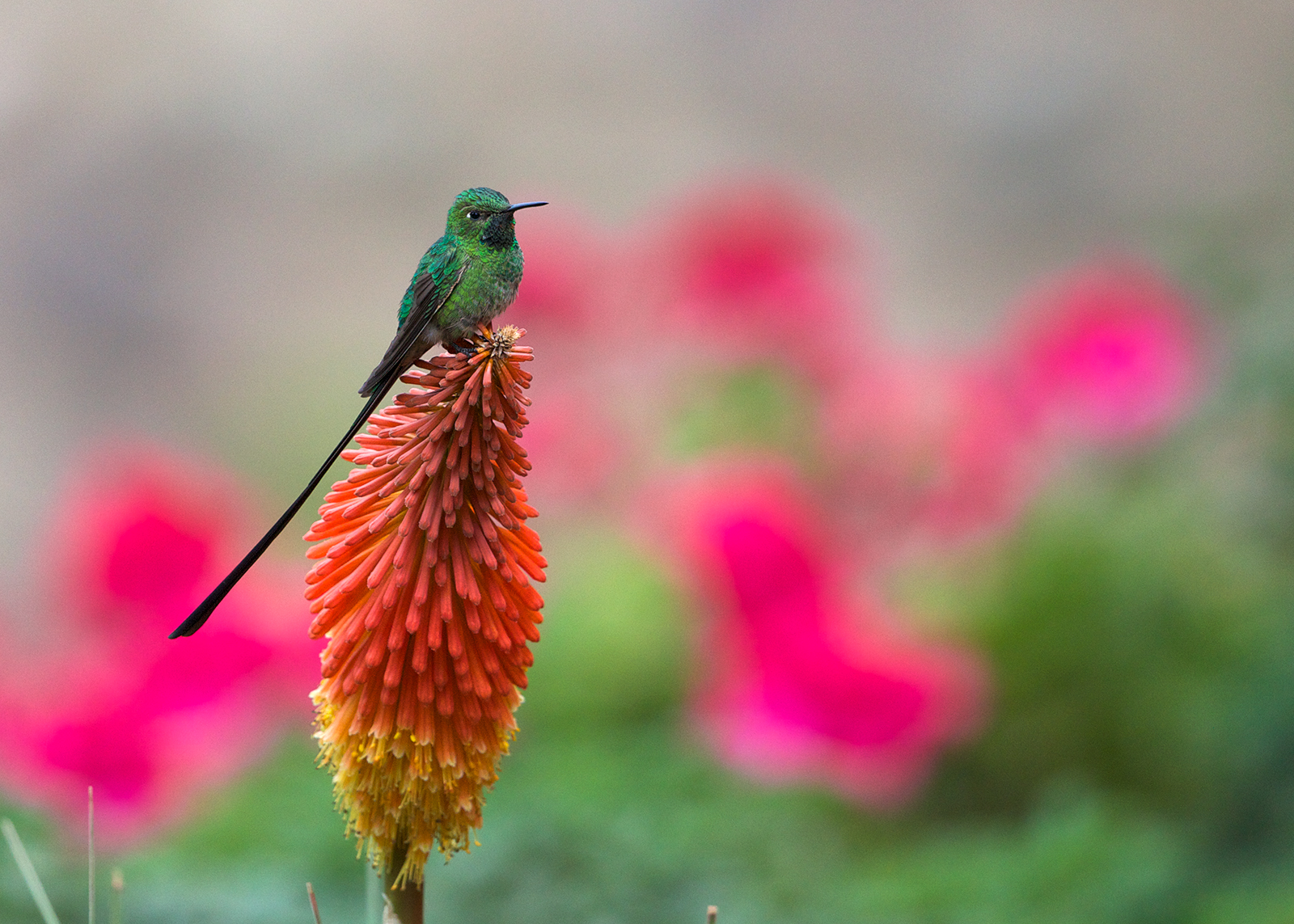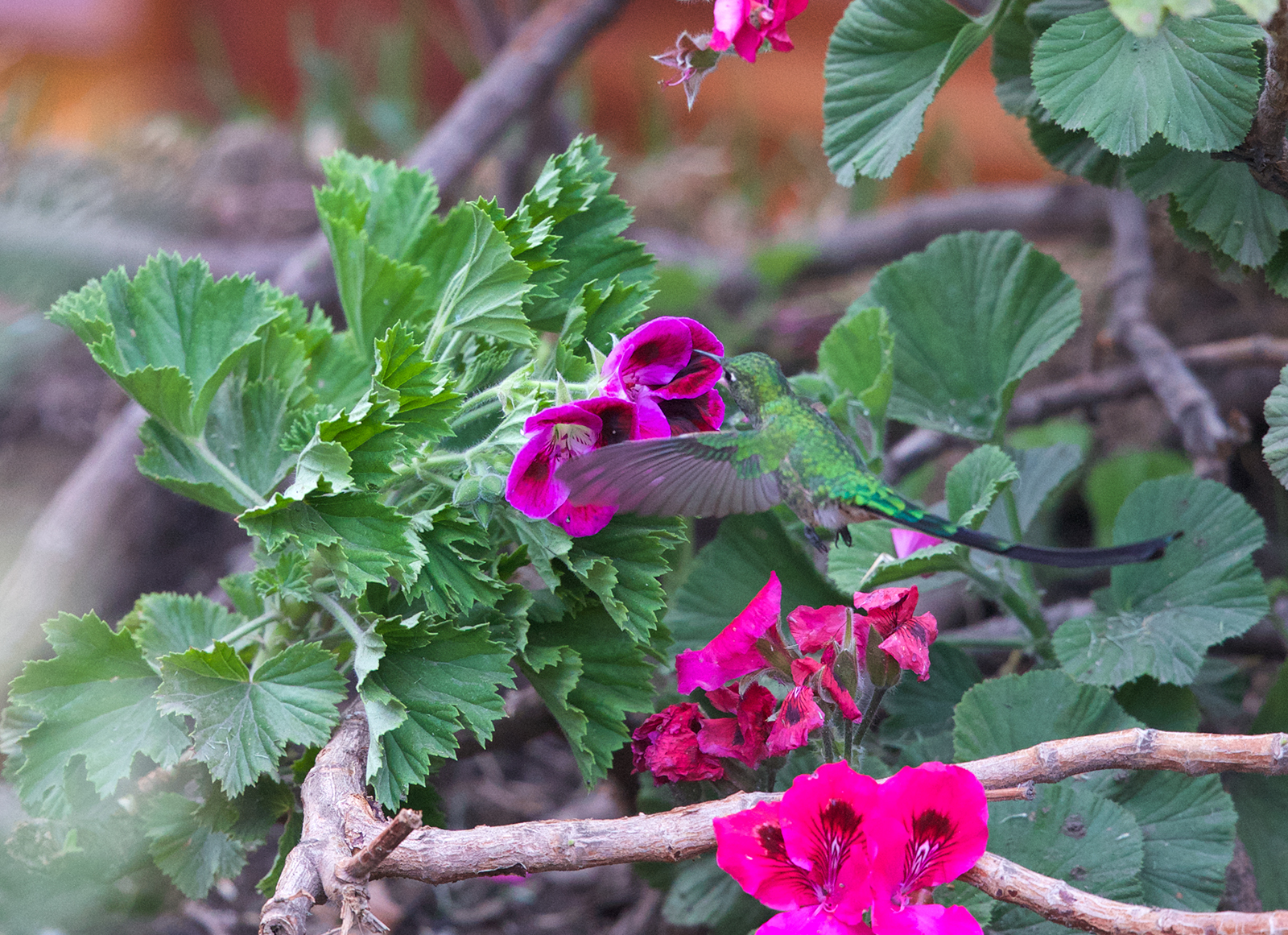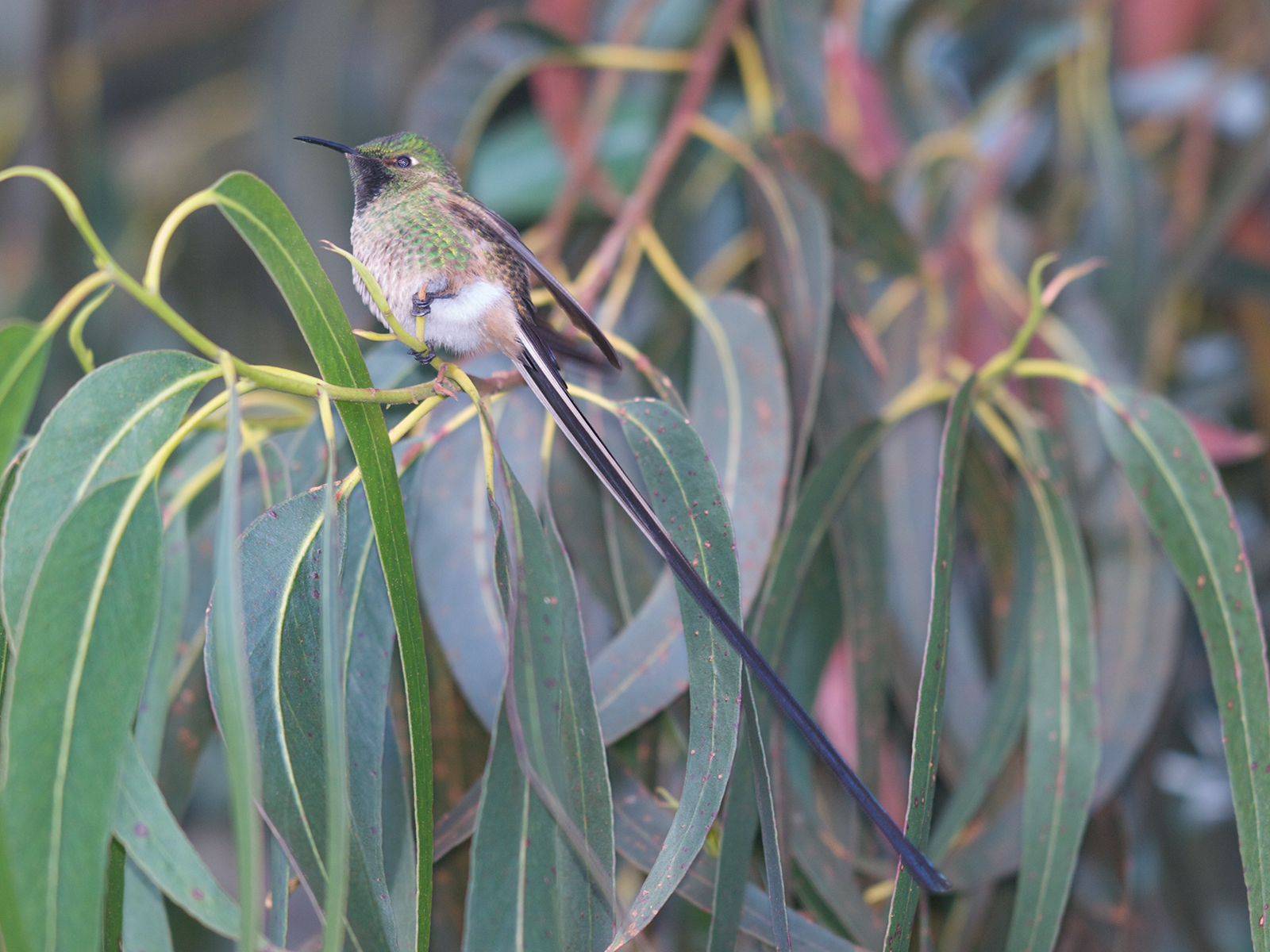Return of the Bird of the Week: Black-tailed Trainbearer
Here’s a hummingbird species whose tail is even longer than its name.

Black-tailed Hummingbird, Ollyatantabo, Peru
The tail of a Black-tailed Trainbearer – a pretty cool name for this species – is half again as long as its body. Perhaps to compensate, it has one of the shortest bills of the hummingbirds. The species favors open areas, gardens and parks. At higher altitudes, in the paramò, it can be fairly common. WC has seen the species in downtown Quito.

Black-tailed Hummingbird Feeding, Ollyatantabo, Peru
Like many hummingbirds, it is surprisingly cryptic for all of the flash and color.
The species is unusual in that it has three distinct, discontiguous ranges. One in Northern Columbia, one in Ecuador and on in Peru. Ornithologists are still sorting out the systematics, but present thinking is that there are three subspecies. The first two images are of the berlepschi subspecies.

Long-tailed Trainbearer, Metropolitan Quito, Ecuador
This bird was photographed in a postage stamp-sized park in metropolitan Quito, Ecuador. It’s the juliae subspecies, paler and with more white in the outer edges of the tail.
Photos of this species are difficult to elegantly compose. The tail is just too long for tight shots.
That amazing tail is likely a product of sexual selection. That females prefer males with a longer tail. Ahem. As an evolutionary mechanism, sexual selection sometimes seems to carry the process to extremes. But humanity is probably in no position to criticize.
Because of the extensive distribution and adaptation to human-altered landscapes, the Long-tailed Trainbearer is not believed to be in immediate danger of extinction.
For more bird photographs, please visit Frozen Feather Images.